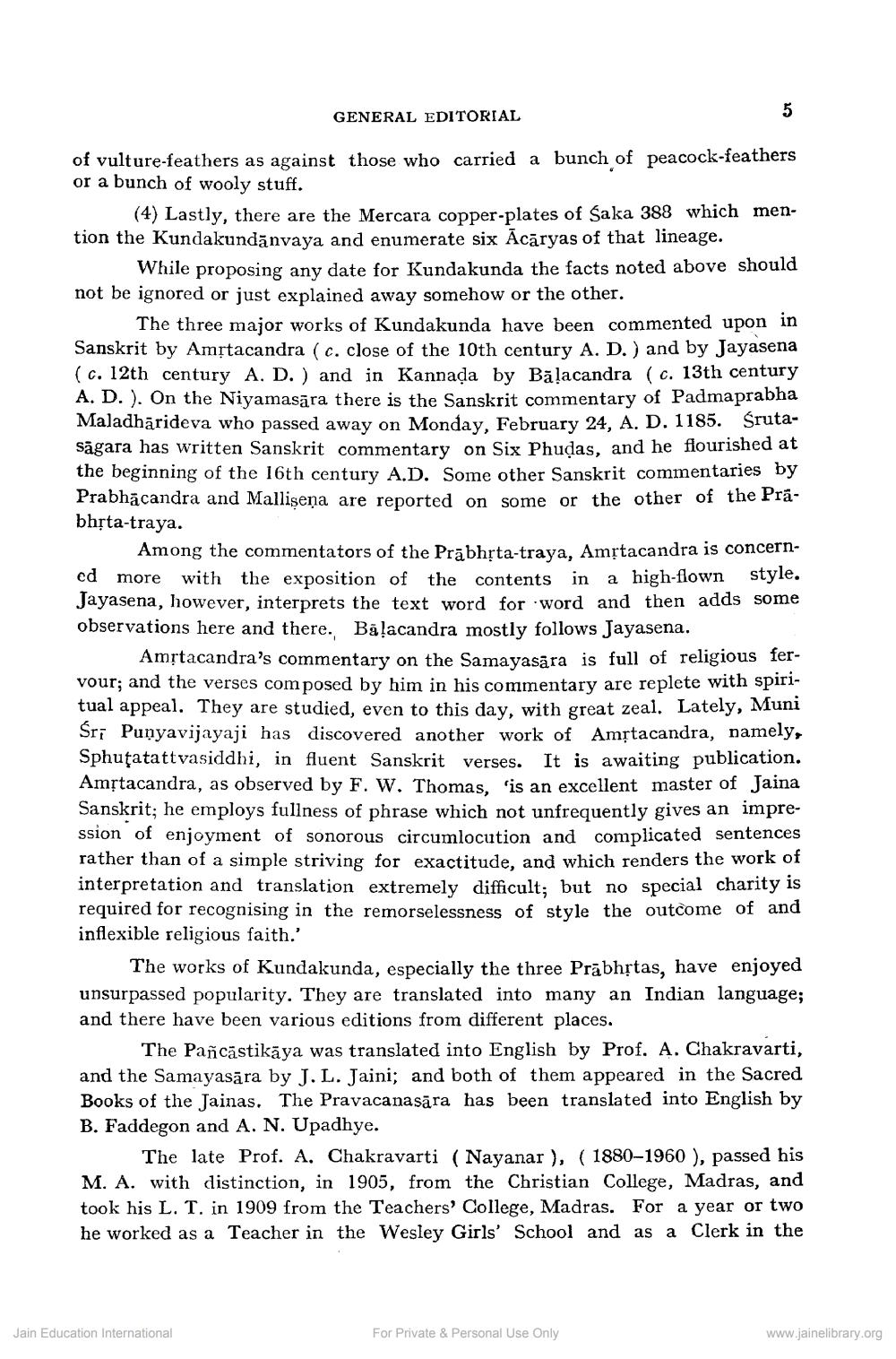Book Title: Samayasara Author(s): Kundkundacharya, Hiralal Jain, A N Upadhye Publisher: Bharatiya Gyanpith View full book textPage 8
________________ GENERAL EDITORIAL of vulture-feathers as against those who carried a bunch of peacock-feathers or a bunch of wooly stuff. (4) Lastly, there are the Mercara copper-plates of Saka 388 which mention the Kundakundānvaya and enumerate six Acāryas of that lineage. While proposing any date for Kundakunda the facts noted above should not be ignored or just explained away somehow or the other. The three major works of Kundakunda have been commented upon in Sanskrit by Amộtacandra (c. close of the 10th century A. D.) and by Jayasena (c. 12th century A. D.) and in Kannada by Bälacandra (c. 13th century A. D. ). On the Niyamasāra there is the Sanskrit commentary of Padmaprabna Maladhārideva who passed away on Monday, February 24, A, D. 1185. SrutaSāgara has written Sanskrit commentary on Six Phudas, and he flourished at the beginning of the 16th century A.D. Some other Sanskrit commentaries by Prabhācandra and Mallisena are reported on some or the other of the bhịta-traya. Among the commentators of the Präbhrta-traya, Amrtacandra is concerncd more with the exposition of the contents in a high-flown style. Jayasena, however, interprets the text word for word and then adds some observations here and there. Baļacandra mostly follows Jayasena. Amrtacandra's commentary on the Samavasara is full of religious fervour; and the verses composed by him in his commentary are replete with spiri. tual appeal. They are studied, even to this day, with great zeal. Lately, Mun Sri Punyavijayaji has discovered another work of Amộtacandra, namely, Sphuţatattvasiddhi, in fluent Sanskrit verses. It is awaiting publication. Amstacandra, as observed by F. W. Thomas, 'is an excellent master of Jaina Sanskrit; he employs fullness of phrase which not unfrequently gives an impression of enjoyment of sonorous circumlocution and complicated sentences rather than of a simple striving for exactitude, and which renders the work of interpretation and translation extremely difficult; but no special charity is required for recognising in the remorselessness of style the outcome of and inflexible religious faith. The works of Kundakunda, especially the three Prābhịtas, have enjoyed unsurpassed popularity. They are translated into many an Indian language; and there have been various editions from different places. The Pañcâstikāya was translated into English by Prof. A. Chakravarti, and the Samayasāra by J.L. Jaini; and both of them appeared in the Sacred Books of the Jainas. The Pravacanasāra has been translated into English by B. Faddegon and A. N. Upadhye. The late Prof. A. Chakravarti (Nayanar ), (1880–1960 ), passed his M. A. with distinction, in 1905, from the Christian College, Madras, and took his L. T. in 1909 from the Teachers' College, Madras. For a year or two he worked as a Teacher in the Wesley Girls' School and as a Clerk in the Jain Education International For Private & Personal Use Only www.jainelibrary.orgPage Navigation
1 ... 6 7 8 9 10 11 12 13 14 15 16 17 18 19 20 21 22 23 24 25 26 27 28 29 30 31 32 33 34 35 36 37 38 39 40 41 42 43 44 45 46 47 48 49 50 51 52 53 54 55 56 57 58 59 60 61 62 63 64 65 66 67 68 69 70 71 72 73 74 75 76 77 78 79 80 81 82 ... 370
